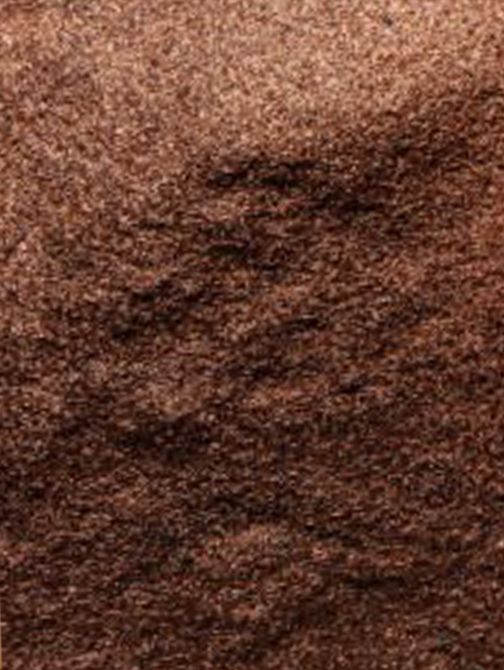Types of Copper Powder:
BENEFITS
Produced by either gas or water atomization of molten copper, atomized copper powder typically consists of spherical or irregular particles with good flowability and uniform bulk density. This makes it ideal for applications such as press-and-sinter metallurgy, metal injection molding (MIM), and laser powder bed fusion (LPBF). The high packing density supports dimensional stability and low porosity in finished parts.
FEATURES
Atomized copper powder offers high electrical and thermal conductivity (up to 97% IACS), low oxygen content (< 0.5%), and good mechanical strength upon sintering. Particle size ranges from 20 µm to 150 µm depending on the production method and classification. The powder exhibits consistent performance in layer-based processes and maintains structural integrity under thermal load.
BENEFITS
Electrolytic copper powder is manufactured through an electrolytic refining process and characterized by dendritic, high-surface-area particles. It is particularly suited for use in conductive pastes, friction materials, and chemical applications where reactivity and surface contact are critical.
FEATURES
This powder has high purity (typically > 99.7% Cu), high surface area (up to 0.35 m²/g), and irregular morphology that enhances compaction and binding with organic or inorganic matrices. The powder is compressible and can be easily alloyed or blended with other metal powders. Its dendritic structure promotes mechanical interlocking and high sintered strength.
Applications of Copper Powder
Copper powder is used in a wide array of industrial sectors including powder metallurgy, electrical and electronic components, additive manufacturing, thermal management systems, and catalysts. In metallurgy, it forms dense, wear-resistant components. In electronics, it ensures reliable current conduction. In additive manufacturing, its flowability and thermal properties support layer uniformity and component accuracy. It is also utilized in chemical synthesis, brake pads, and self-lubricating bearings due to its reactivity and structural properties.
- Ceramics Products
- Ceramics Products
- Ceramics Products
- Ceramics Products

